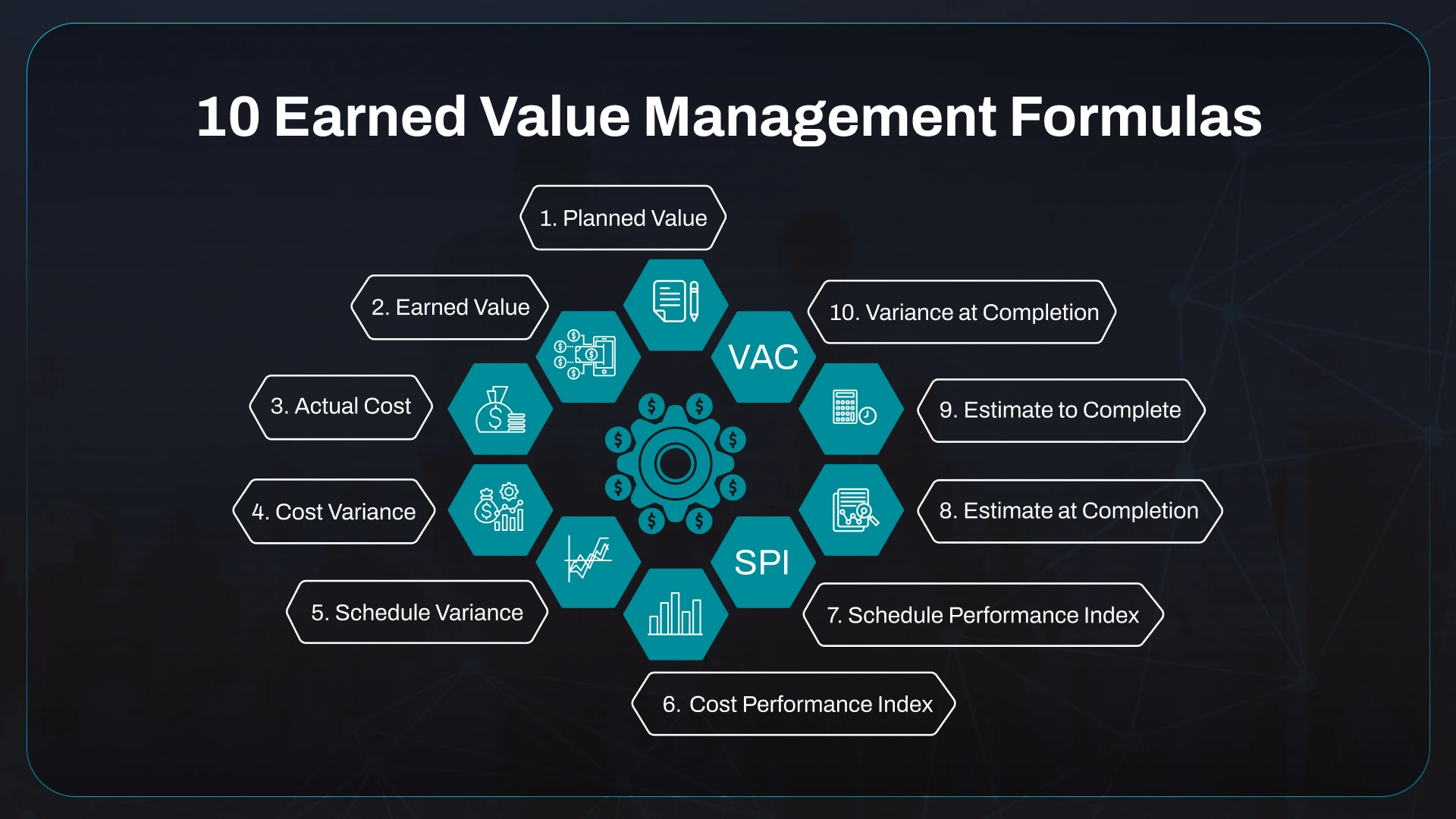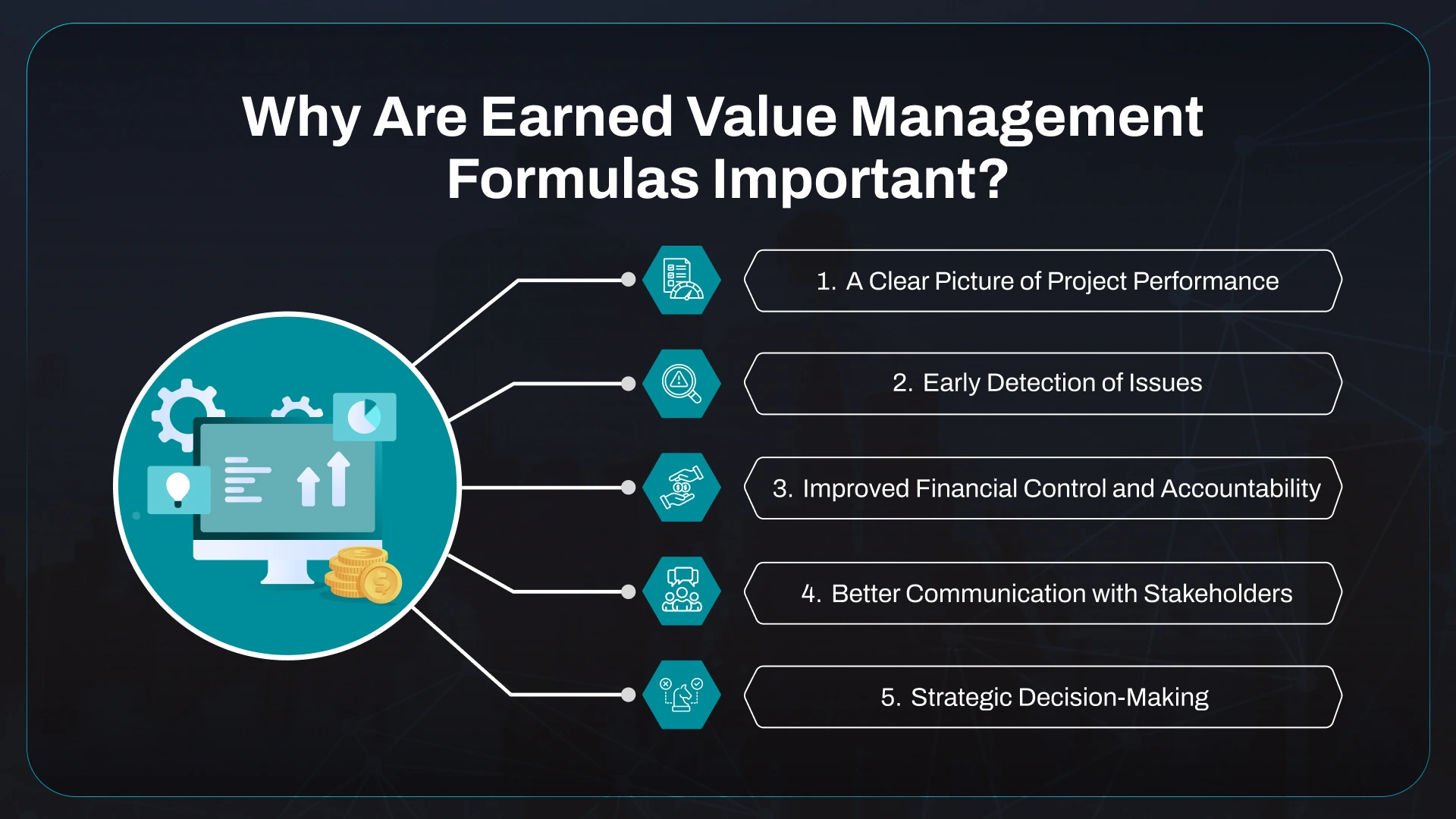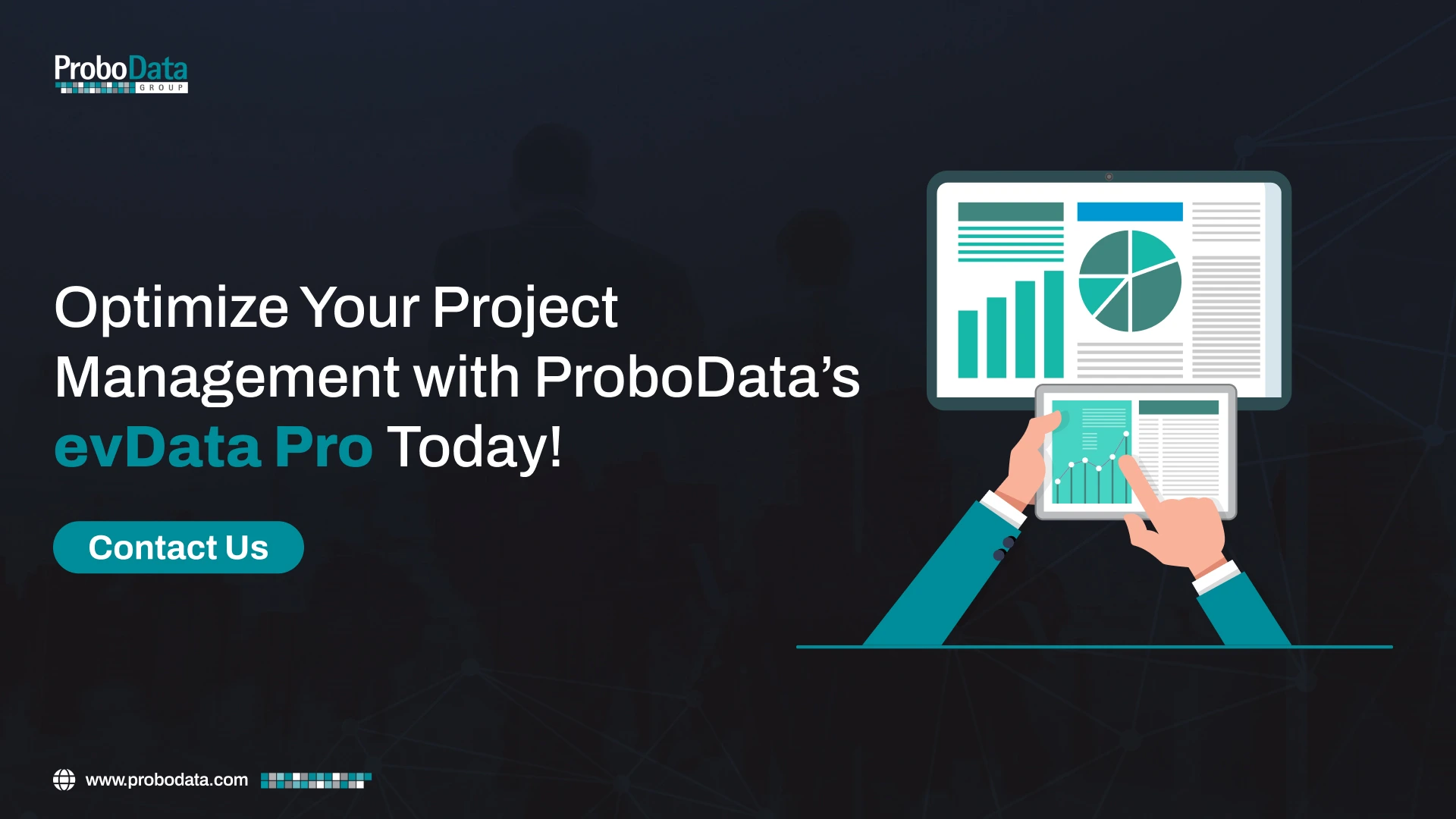
10 Earned Value Management Formulas to Know for Project Management
Have you ever spent endless hours determining whether the money you’re putting into a project matches the value of the work you’re getting out of it? You’ll have precise, definite answers with Earned Value Management (EVM).
EVM is a powerful tool used in project management to help you track your project’s progress in terms of time and money. Understanding essential formulas can make it easier to determine its progress and help you make better decisions.
10 Earned Value Management Formulas

1. Planned Value
Planned Value is the amount of money you expect to spend on the project at a specific time. It’s like a budget you planned to follow.
Formula
| Planned Value (PV) = Planned Percentage of Work Completed X Total Project Budget |
Example
If you’re working on a project with a total budget of $10,000, plan to complete 50% of the work by now. The Planned Value (PV) would be:
𝑃𝑉 = 50% × $10,000 = $5,000
This means that by this point, you planned to spend $5,000.
2. Earned Value
Earned Value (EV) tells you how much of the planned work has been completed, measured in money.
Formula
| Earned Value (EV) = Budgeted Cost of Work Performed X Percentage of Work Completed |
Example
If you’ve completed 40% of the work on that $10,000 project, your Earned Value (EV) would be:
EV = 40% × $10,000 = $4,000
This shows you’ve completed $4,000 of work according to your plan.
3. Actual Cost
Actual Cost (AC) is the money you’ve spent on the project.
Formula
| Actual Cost (AC) = Total Cost Incurred for the Work Completed |
Example
If you’ve spent $4,500 to complete 40% of the work, then the Actual Cost (AC) is:
AC = $4,500
4. Cost Variance
Cost Variance (CV) shows whether your project is under or over budget. A positive CV means you’re under budget, and a negative CV means you’re over budget.
Formula
| Cost Variance (CV) = Earned Value (EV) – Actual Cost (AC) |
Example
Using our previous numbers, where EV is $4,000, and AC is $4,500:
CV = $4,000 − $4,500 = −$500
This means you are $500 over budget.
5. Schedule Variance
Schedule Variance (SV) tells you if you’re ahead or behind schedule. A positive SV means you’re ahead of schedule, and a negative SV means you’re behind.
Formula
| Scheduled Variance (SV) = Earned Value (EV) -Planned Value (PV) |
Example
If your Earned Value (EV) is $4,000 and your Planned Value (PV) is $5,000:
SV = $4,000 − $5,000 = −$1,000
This shows you are $1,000 worth of work behind schedule.
6. Cost Performance Index
The Cost Performance Index (CPI) measures cost efficiency or how well you use your money. A CPI greater than one means you’re under budget, while a CPI less than one means you’re over budget.
Formula
| Cost Performance Index (CPI) = Earned Value (EV) / Actual Cost (AC) |
Example
With EV at $4,000 and AC at $4,500:
CPI = $4,000 / $4,500 = 0.89
A CPI of 0.89 means you’re not using your budget efficiently or over budget. However, it is manageable if you take a few corrective measures.
7. Schedule Performance Index
The Schedule Performance Index (SPI) shows how efficiently you use your time. An SPI greater than 1 means you’re ahead of schedule, while an SPI less than 1 means you’re behind.
Formula
| Schedule Performance Index (SPI) = Earned Value (EV) / Planned Value (PV) |
Example
With EV at $4,000 and PV at $5,000:
SPI = $5,000 / $4,000 = 0.8
An SPI of 0.8 means you are behind schedule.
8. Estimate at Completion
Based on current performance, the Estimate at Completion (EAC) forecasts the total project cost when finished.
Formula
| Estimate at Completion = Cost Performance Index (CPI) / Budget at Completion (BAC) |
Here, Budget at Completion (BAC) is the total planned value of the project.
Example
If your project’s total budget (BAC) is $10,000 and your CPI is 0.89:
𝐸𝐴𝐶 = $10,000 ÷ 0.89 ≈ $11,236
This means the project will likely cost about $11,236 if current trends continue.
9. Estimate to Complete
Estimate to Complete (ETC) is how much more money you think you’ll need to finish the project from now on.
Formula
| Estimate to Complete (ETC) = Estimate at Completion (EAC) – Actual Cost (AC) |
Example
With EAC estimated at $11,236 and AC at $4,500:
ETC = $11,236 − $4,500 = $6,736
You’ll need an estimated $6,736 more to complete the project.
10. Variance at Completion
Variance at Completion (VAC) predicts whether the project will be under or over budget at the end.
Formula
| Variance at Completion (VAC) = Budget at Completion (BAC) – Estimate at Completion (EAC) |
Example
If BAC is $10,000 and EAC is $11,236:
VAC = $10,000 − $11,236 = −$1,236
This indicates the project will be $1,236 over budget.
Why Are Earned Value Management Formulas Important?

Understanding and using Earned Value Management (EVM) formulas is essential for effective project management. If you’re a project manager, these formulas will give you essential information and data about the project finances and schedule.
1. A Clear Picture of Project Performance
EVM formulas like Planned Value (PV), Earned Value (EV), and Actual Cost (AC) offer a clear, quantitative view of a project’s progress. Without these metrics, you might rely on guesswork or incomplete data, leading to delays, cost overruns, and resource misallocation.
Calculating these values regularly allows you to easily see if the project is on track and adjust your plans, accordingly.
2. Early Detection of Issues
One of the most significant advantages of EVM formulas is their ability to highlight potential issues early on.
For example, the Schedule Performance Index (SPI) and Cost Performance Index (CPI) can indicate whether a project falls behind schedule or exceeds budget long before it becomes a critical problem.
This early detection allows you to make necessary adjustments, such as reallocating resources, negotiating with stakeholders for more time or budget, or revising the project scope to stay on track.
3. Improved Financial Control and Accountability
The Cost Variance (CV) and Variance at Completion (VAC) formulas are crucial for maintaining financial control over a project. These formulas help you understand if you are under or over budget at any given point.
By regularly monitoring these metrics, you can make informed decisions about where to cut costs or when to request additional funding. This ensures that projects are completed within budget and enhances accountability, as teams must regularly report their financial status.
4. Better Communication with Stakeholders
Using EVM formulas allows you to communicate project status more effectively to stakeholders, such as clients, executives, and team members.
For instance, presenting a positive Cost Performance Index (CPI) can build confidence, showing that the project is being managed efficiently. However, if the Schedule Variance (SV) is negative, you can inform the stakeholders early, allowing for discussions on potential solutions or adjustments.
5. Strategic Decision-Making
EVM formulas provide a foundation for strategic decision-making throughout the project lifecycle.
For example, the Estimate at Completion (EAC) and Estimate to Complete (ETC) formulas offer forecasts on future project costs, enabling you to decide whether continuing the current path is feasible or if a change in strategy is needed. This information is valuable for high-level planning and can influence decisions that impact the project and the organization’s broader strategic goals.
Optimize Your Project Management with ProboData’s evData Pro Today!

Are you ready to take control of your project’s performance and budget? ProboData’s evData Pro can help you achieve just that. With advanced Earned Value Management (EVM) tools, our platform offers:
- Real-time insights to monitor project progress and make informed decisions.
- Accurate cost tracking to ensure your project stays within budget.
- Detailed performance analysis to identify potential issues before they become problems.
- User-friendly dashboards for easy access to critical project metrics.
Don’t let unexpected costs and delays catch you off guard—equip your team with the right tools to manage projects effectively. Discover how evData Pro can transform your project management approach.
Visit ProboData today and contact us for a personalized demo!
